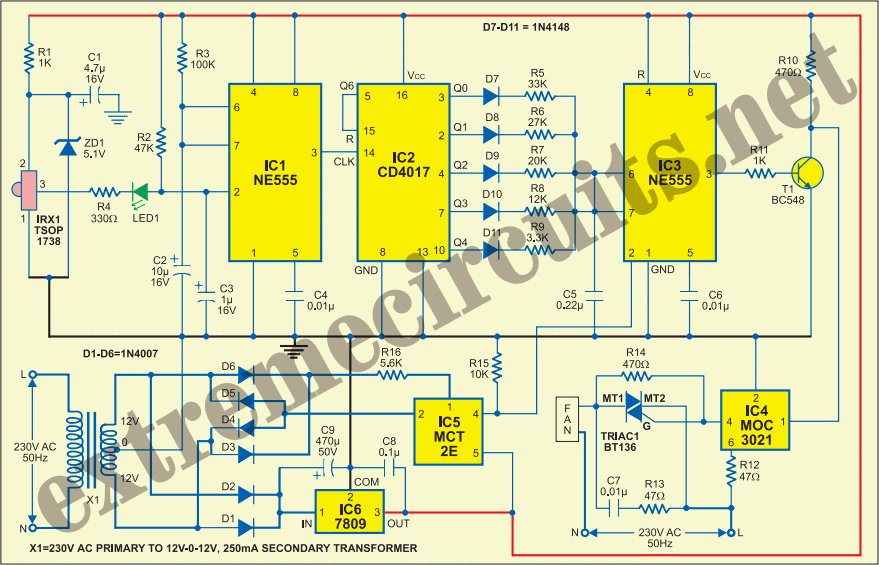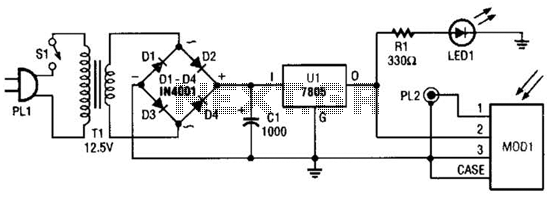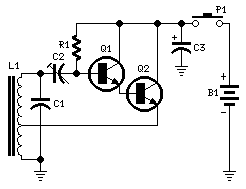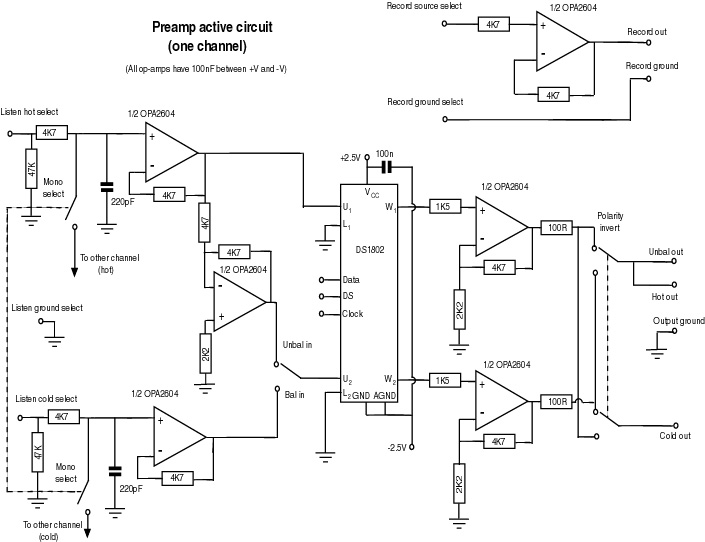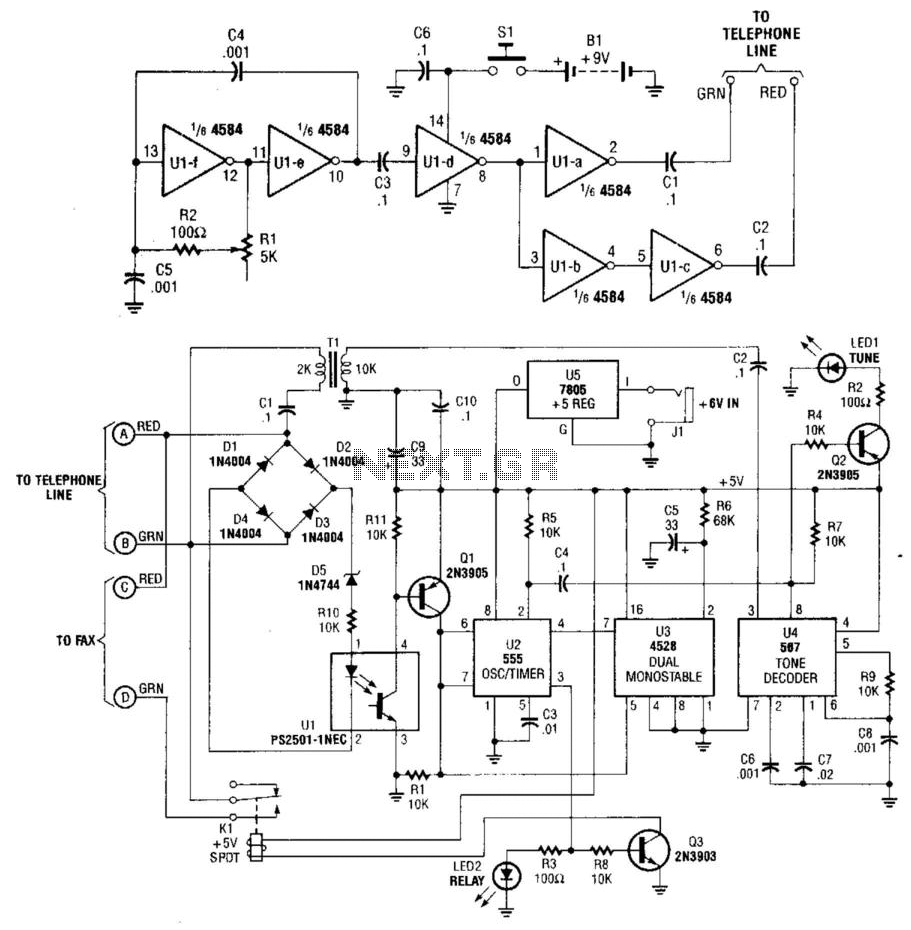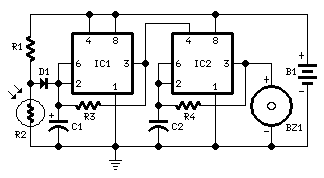
Magnetic-Radiation Remote-Control
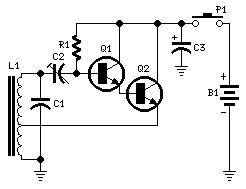
These units can be useful as a short-range, single-channel remote-control. When the pushbutton in the transmitter circuit is briefly activated, the LED D1 in the receiver illuminates and an optional beeper or relay can be operated. Circuit operation is based on a non-modulated 35KHz frequency carrier transmitter, and on a high-gain two-stage 35KHz amplifier receiver, followed by a frequency-voltage converter and DC load driver.
The circuit consists of two main sections: the transmitter and the receiver. The transmitter employs a simple pushbutton switch connected to an oscillator circuit that generates a 35KHz signal. This oscillator can be built using a 555 timer IC configured in astable mode or using a basic transistor oscillator circuit. When the pushbutton is pressed, the oscillator activates, transmitting a modulated signal at 35KHz.
The receiver section is designed to pick up the 35KHz signal. It features a high-gain amplifier, typically constructed using operational amplifiers or transistors, configured in a two-stage arrangement to boost the weak signal received by the antenna. The output of this amplifier is fed into a frequency-voltage converter, which translates the frequency of the incoming signal into a corresponding voltage level. This conversion is crucial for controlling the subsequent DC load driver, which can activate an LED, beeper, or relay.
The LED D1 serves as a visual indicator, illuminating when the signal is successfully received and processed. If a beeper or relay is included in the circuit, it can be powered on by the output from the DC load driver, allowing for additional functionality such as sound alerts or controlling larger loads.
The overall design emphasizes simplicity and efficiency, making it suitable for various applications in remote control systems, such as garage door openers, alarm systems, or simple wireless switches. The non-modulated nature of the carrier frequency simplifies the design but may limit the range and robustness against interference compared to more complex modulated systems.These units can be useful as a short-range, single-channel remote-control. When the pushbutton in the transmitter circuit is briefly activated, the LED D1 in the receiver illuminates and an optional beeper or relay can be operated. Circuit operation is based on a non-modulated 35KHz frequency carrier transmitter, and on a high-gain two-stage 35KHz amplifier receiver, followed by a frequency-voltage converter and DC load driver.
🔗 External reference
The circuit consists of two main sections: the transmitter and the receiver. The transmitter employs a simple pushbutton switch connected to an oscillator circuit that generates a 35KHz signal. This oscillator can be built using a 555 timer IC configured in astable mode or using a basic transistor oscillator circuit. When the pushbutton is pressed, the oscillator activates, transmitting a modulated signal at 35KHz.
The receiver section is designed to pick up the 35KHz signal. It features a high-gain amplifier, typically constructed using operational amplifiers or transistors, configured in a two-stage arrangement to boost the weak signal received by the antenna. The output of this amplifier is fed into a frequency-voltage converter, which translates the frequency of the incoming signal into a corresponding voltage level. This conversion is crucial for controlling the subsequent DC load driver, which can activate an LED, beeper, or relay.
The LED D1 serves as a visual indicator, illuminating when the signal is successfully received and processed. If a beeper or relay is included in the circuit, it can be powered on by the output from the DC load driver, allowing for additional functionality such as sound alerts or controlling larger loads.
The overall design emphasizes simplicity and efficiency, making it suitable for various applications in remote control systems, such as garage door openers, alarm systems, or simple wireless switches. The non-modulated nature of the carrier frequency simplifies the design but may limit the range and robustness against interference compared to more complex modulated systems.These units can be useful as a short-range, single-channel remote-control. When the pushbutton in the transmitter circuit is briefly activated, the LED D1 in the receiver illuminates and an optional beeper or relay can be operated. Circuit operation is based on a non-modulated 35KHz frequency carrier transmitter, and on a high-gain two-stage 35KHz amplifier receiver, followed by a frequency-voltage converter and DC load driver.
🔗 External reference
Warning: include(partials/cookie-banner.php): Failed to open stream: Permission denied in /var/www/html/nextgr/view-circuit.php on line 713
Warning: include(): Failed opening 'partials/cookie-banner.php' for inclusion (include_path='.:/usr/share/php') in /var/www/html/nextgr/view-circuit.php on line 713
